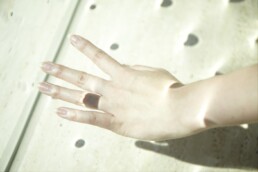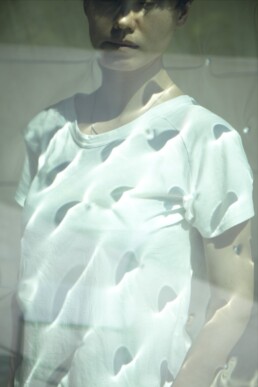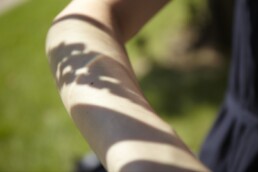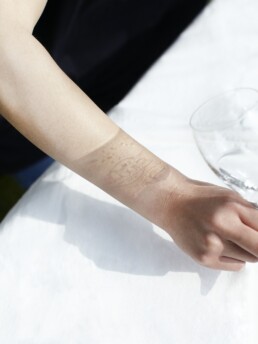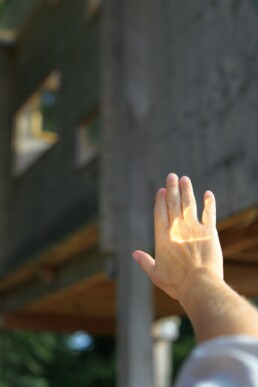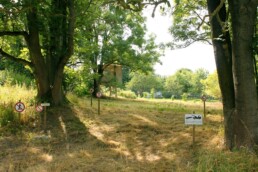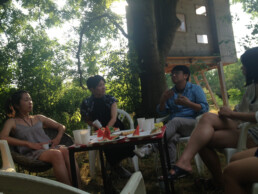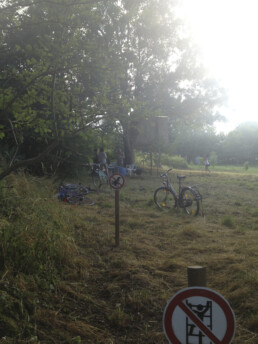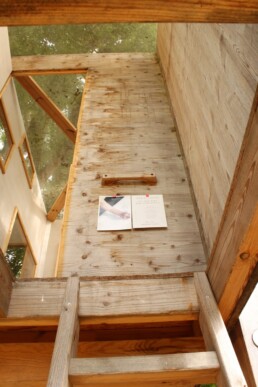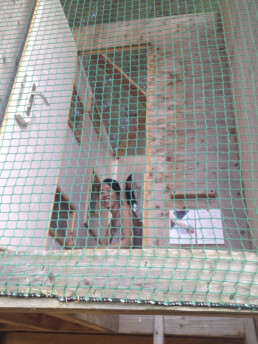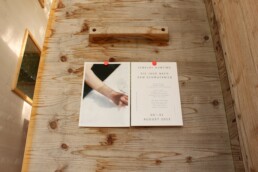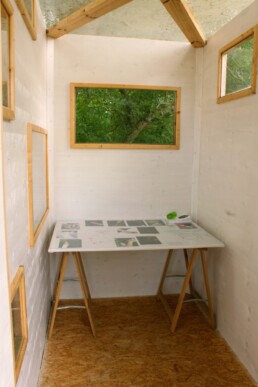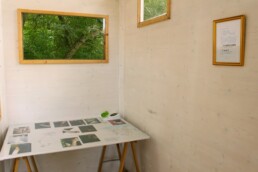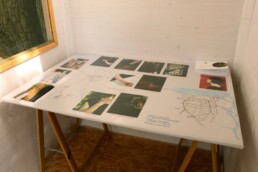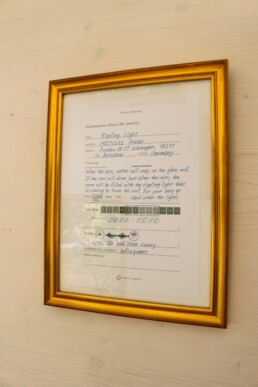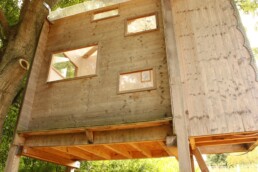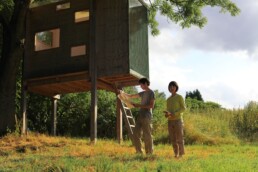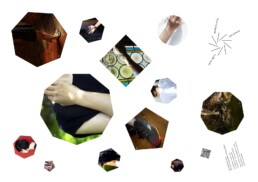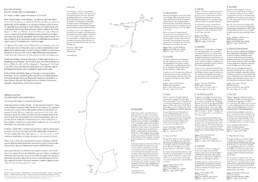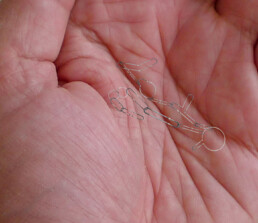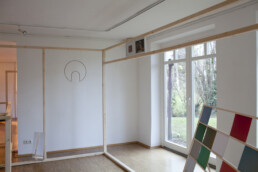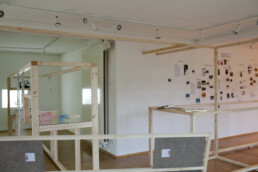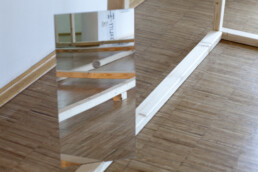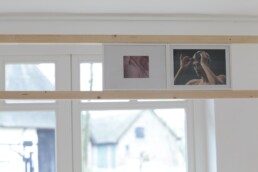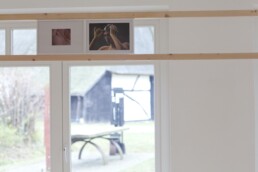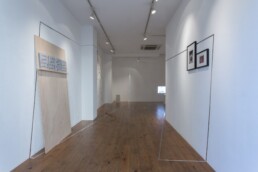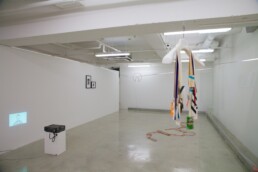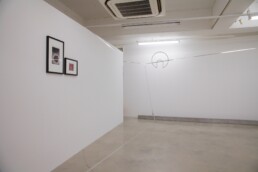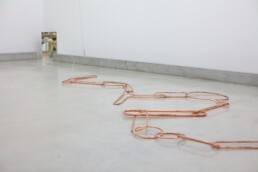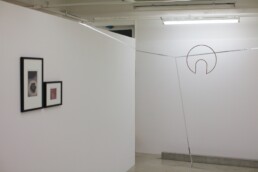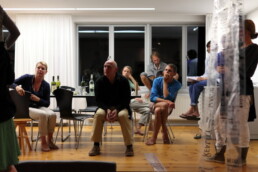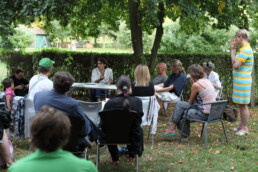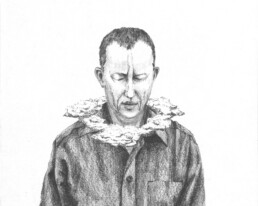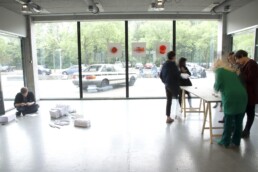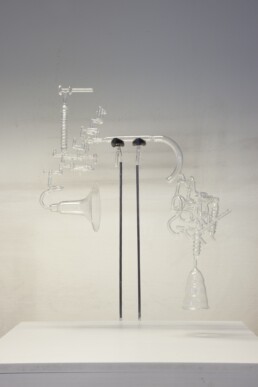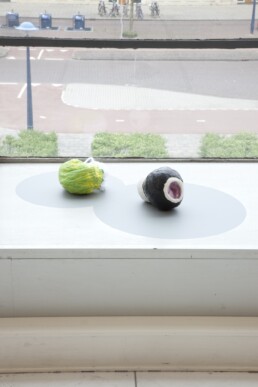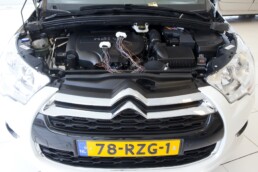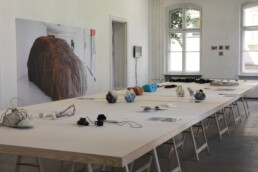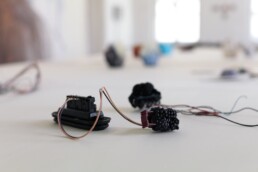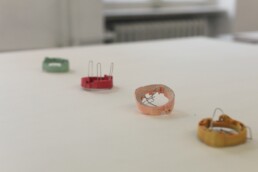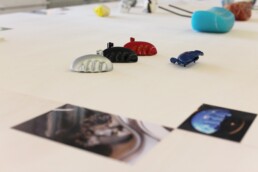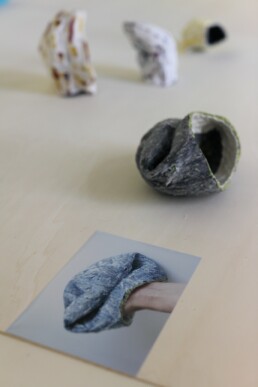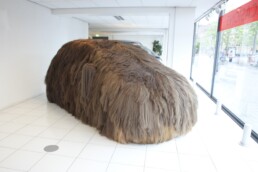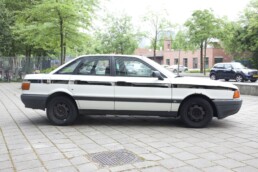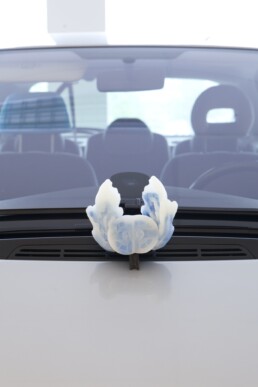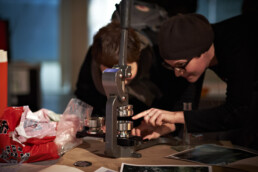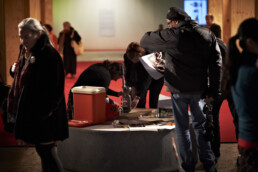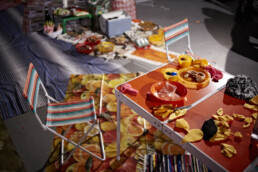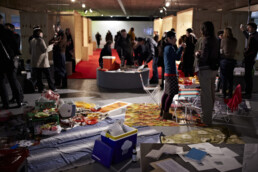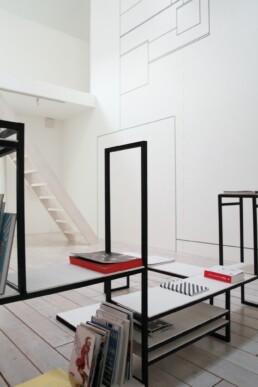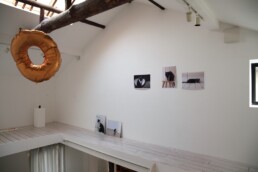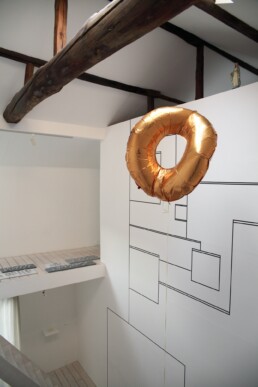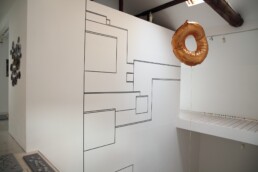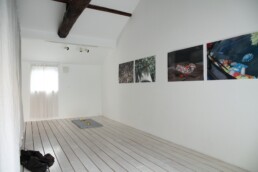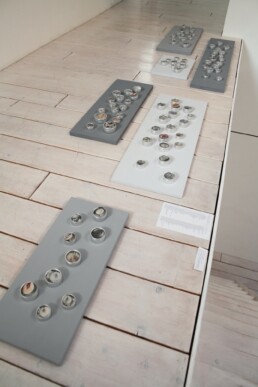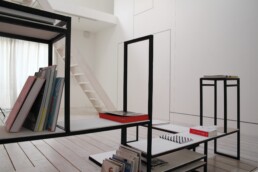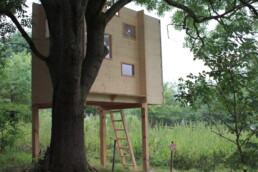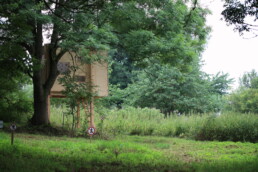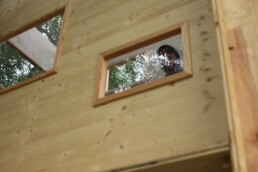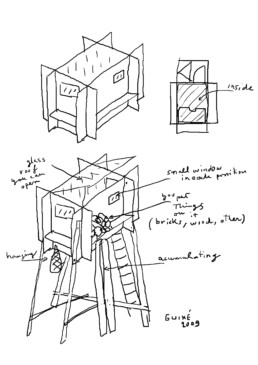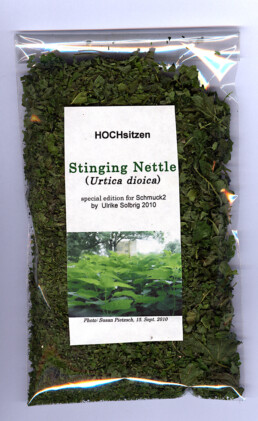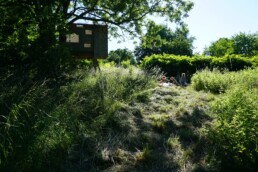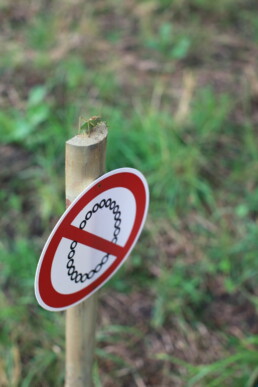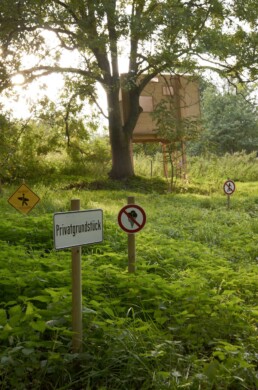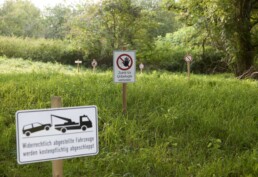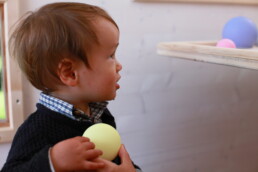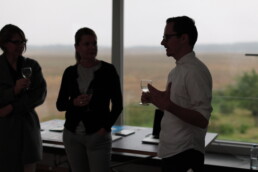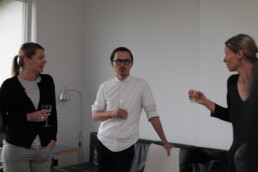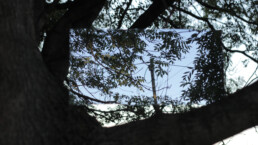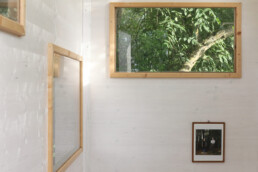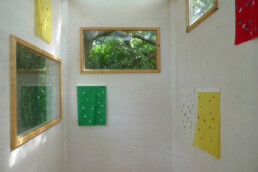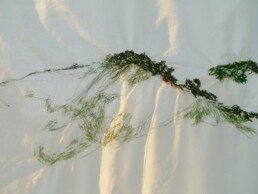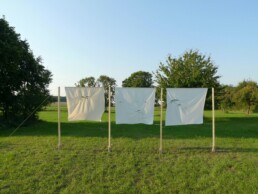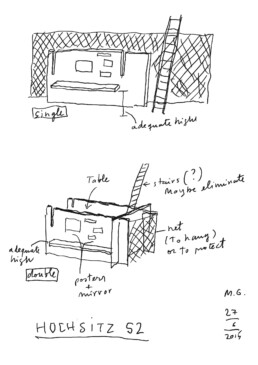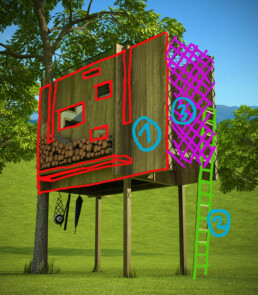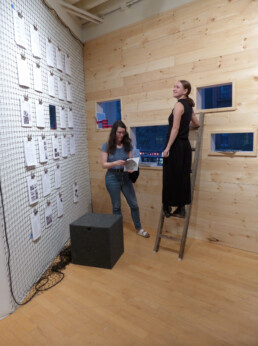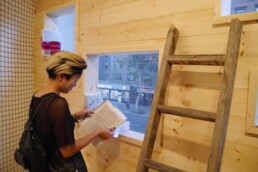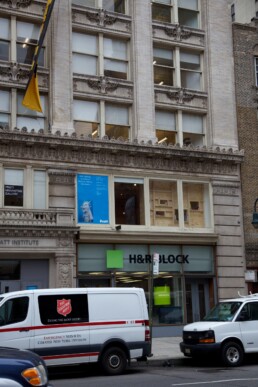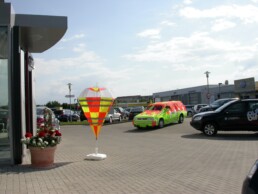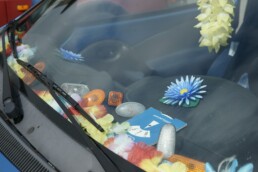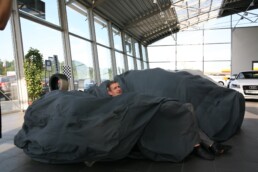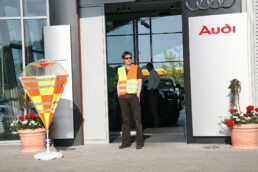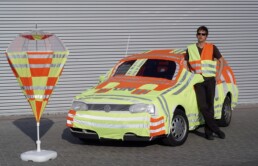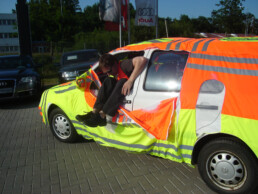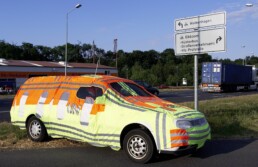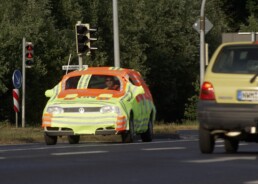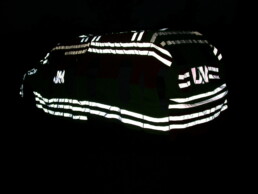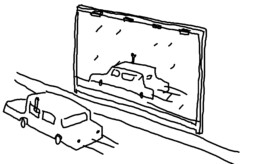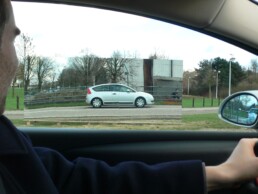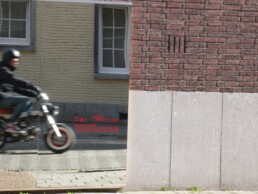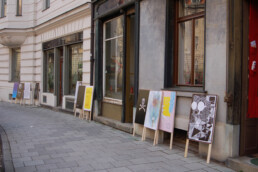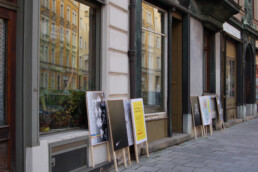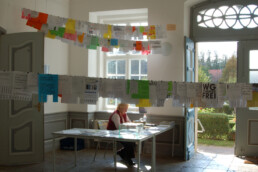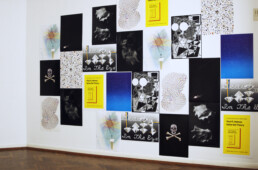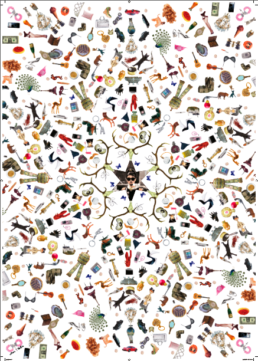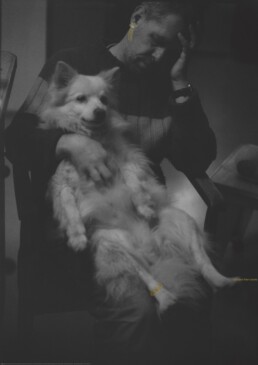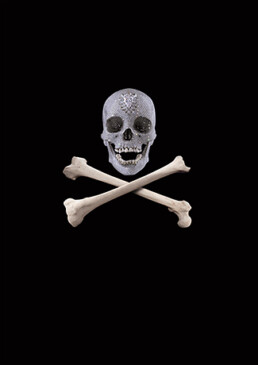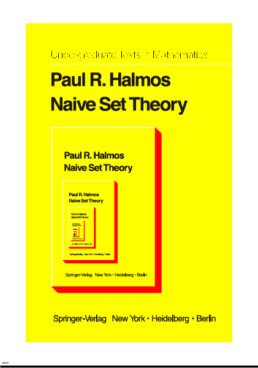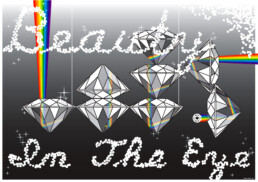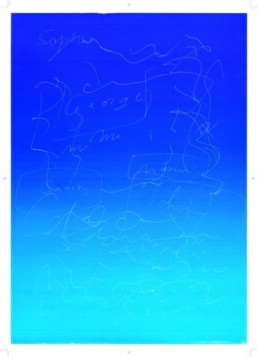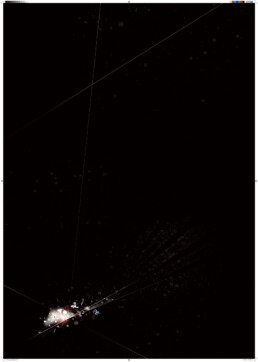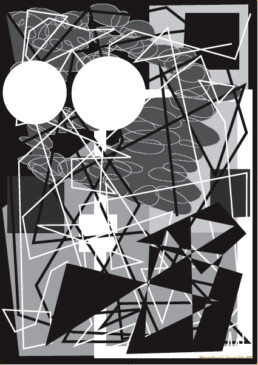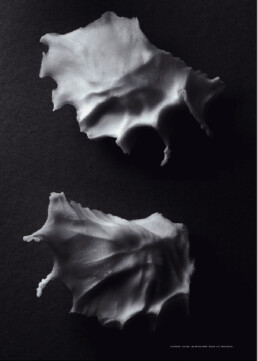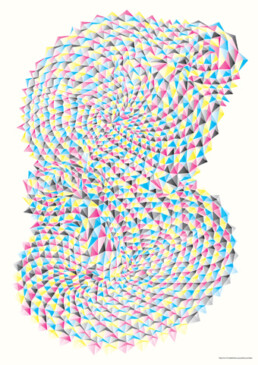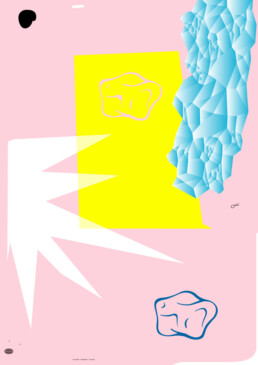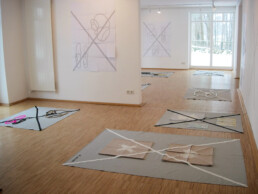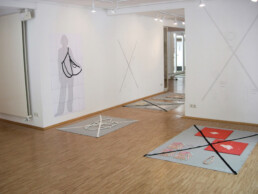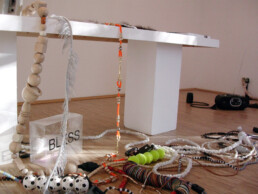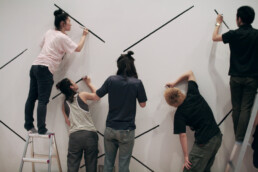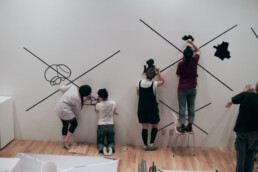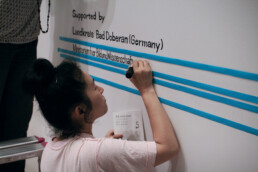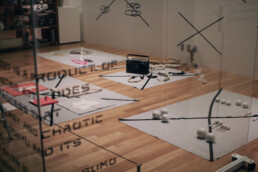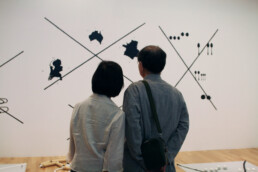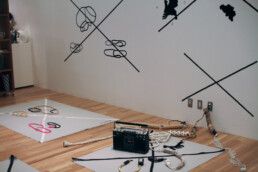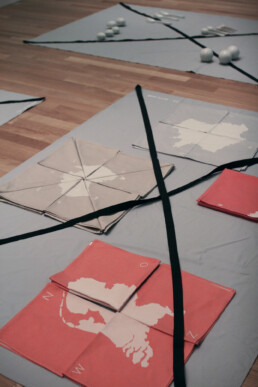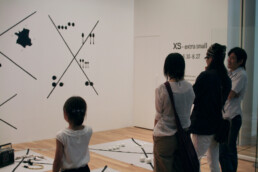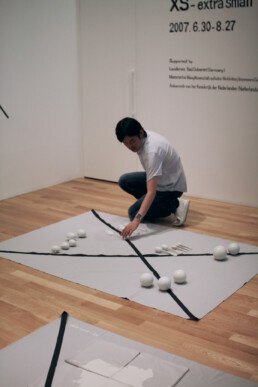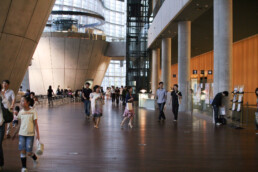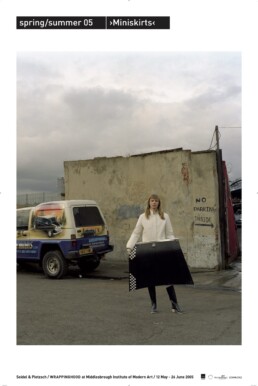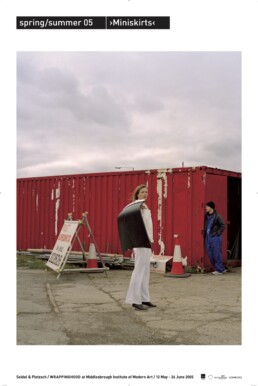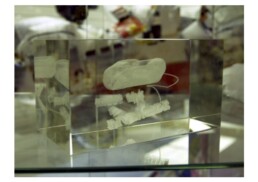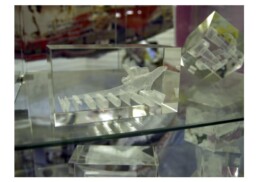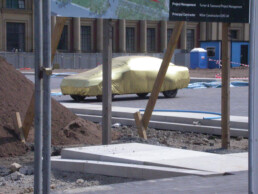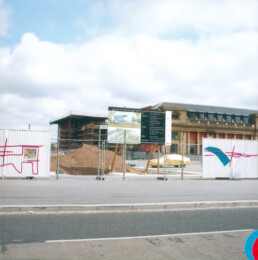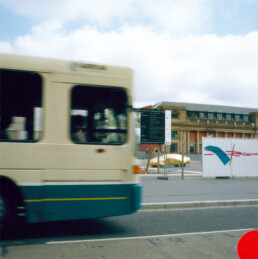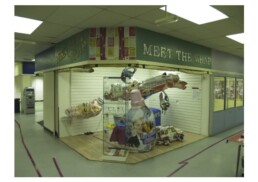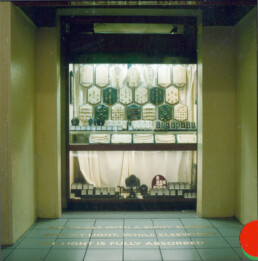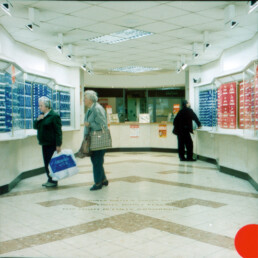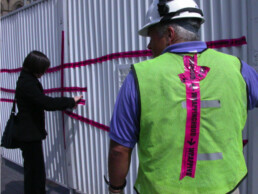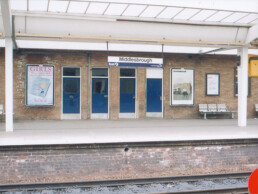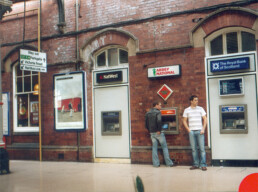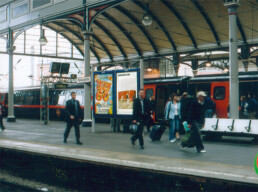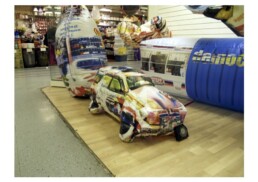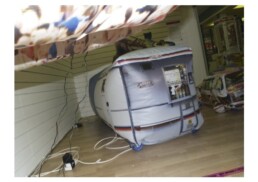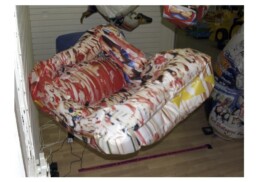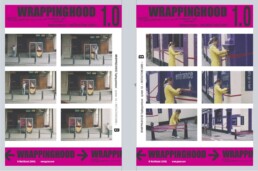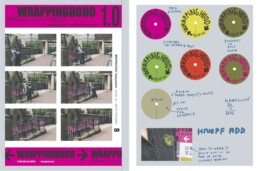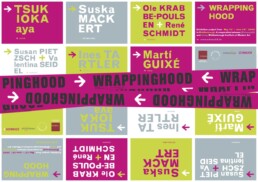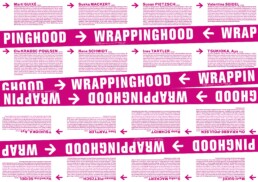Jewellery Hunting
16
2013
A project by Naoko Ogawa in collaboration with SCHMUCK2.
Ogawa’s jewellery hunt is based on the connotation of individual beauty that exists only in our imagination. The artist’s goal is to initiate a hunt in which jewellery and the possession thereof is only experienced visually. Moreover, one is sensitised to the awareness of a new perception of worth.
According to Ogawa, the possession of worth is the most meaningful element of each person, because it is what constitutes the respective individual personality. Similar to the possession of a car, a clock, a work of art, or a house, jewellery is considered to be a specific indicator of self-expression in our society. The artist alludes to this idea in her jewellery hunt.
In Ogawa’s project Jewelry Hunting – Die Jagd nach dem Schmuckbild, a fleeting image of jewellery is captured, existing only for the moment. For this, the artist makes use of various lighting effects and apparitions. Thus, glowing light, diffused light, light fragments, or a stark colour contrast, as well as silhouettes or casted shadows can be pieces of jewellery in the sense given by the artist.
Visitors can go on the jewellery hunt themselves by means of a field map on which the artist has defined possible places to hunt down jewellery in the area of Bad Doberan/Rostock.
Point of departure for the hunt was the HOCHsitz Atelier. A piece of jewellery from a successful hunt could be captured in a picture, or just carried home in one’s memory.
Get your field map and start your hunt from the HOCHsitz!
© Naoko Ogawa
Naoko Ogawa studied at the Tokyo National University of Fine Arts and Music in the master class for metalwork. She was then a research student at Tama Art University in Tokyo, where she completed her Bachelor’s in the metal class. She has participated in numerous international exhibits and presented her most important solo show to date in 2011 at the Galerie Biro in Munich. In contrast with most jewellery artists, Ogawa develops jewellery as an object for which the meaning of the wearing of jewellery also plays a significant role. The motivation for her work is the piece of jewellery that is completed only through its being worn. Naoko Ogawa lives in Berlin.
Jewellery Hyperreal
15
2012/2014
The point of departure for the workshop and the exhibition took its shape from the views of the Spanish designer Marti Guixe, who stated the following in a 2011 interview with SCHMUCK2:
“I think at the moment that jewellery’s purpose is to be only a picture—not a reality—and in that way it can be present without being made. (…) Something like haute couture, you see it everywhere but nobody wears it.” And “Jewellery should go beyond material and handicraft. (…) This could be plastic surgery, or text, or whatever that could be added into your image, figure or composition of the photo or video.”
from: “Hochsitzen”, published by SCHMUCK2, 2011
The workshop at Künstlerhaus Lukas and the following exhibition at Neues Kunsthaus Ahrenshoop involved artists and designers Gabriele Altevers(DE), Caroline Bayer(DE), Karla Detlefsen(DE), Benedikt Fischer(NL), Marti Guixe(ES), Inga Knölke(DE), Tom Kühne(DE), Susan Pietzsch(DE), Anne Schloen(DE) and Wolfgang Stehle (DE) called attention to this development. Artists did deal especially with the questions: Does the emergence of hyperreality also have an effect on the human need for adornment? What significance does the existence of a hyperreality hold for the concept of jewellery? Can jewellery be transported into a hyperreal existence?. Excerpts of the project had been on show at the exhibition space (PLACE ) by method in Tokyo(JP) and studio J in Osaka(JP).
“JEWELLERY HYPERREAL” – How could jewellery be transferred into hyperreality?
Book launch and exhibition 04th – 19th of april 2014 at (PLACE ) by method, Tokyo
26th of april – 24th of may 2014 at studio J, Osaka, featuring art works from the workshop during August 2012 at Künstlerhaus Lukas Ahrenshoop by Marti Guixe/ Inga Knölke/ Susan Pietzsch/ Wolfgang Stehle.
Funded by the Ministry of Culture of Mecklenburg-Western Pomerania and the County North Pomerania.
CARversation
14
2012
Ever since it was invented, the car has not only represented technological ingenuity but also evoked connotations of very human qualities like mobility, freedom and luxury. For many people a car is more than just a mode of transport: it is linked to power and even eroticism. Cars are advertised in terms of pleasure, aesthetics, awareness and flexibility – all notions that apply equally to the discourse surrounding jewellery.
During a workshop project initiated by SCHMUCK2 at the jewellery department »Het Sierraad« at the Gerrit Rietveld Academie in Amsterdam under the title »CARversation« 12 students (Dovile Bernadisiute, Mio Fujimaki, Tamara Gvierbergen, Jing He, Garam Jung, Laura Klinkenberg, Karoline Kvist, Giedre Lisauskaite, Veselina Popova, Bregje Sliepenbeck, Misato Unno and Eline Willemarck) focused upon the bizarre connection between cars, jewellery and human nature.
The six-month project culminated in an exhibition at Citroen Nederland B.V. and Amsterdam & PRPS (Public Rietveld Project Space).
Some of the works continued to be on display in the exhibition EXTREME CRAFTS at the Freies Museum Berlin.
EXTREME CRAFTS (curated by Ulrike Solbrig & Jole Wilcke & Hilde Methi) brought together current approaches in art that deal with the ethical and aesthetic dimension of craft and its potency as an idea in art. The exhibition wanted to highlight different ways to bring art and craft together to produce »a productive confusion within the normal hierarchy of cultural prestige«.
http://www.extremecrafts.de
Discursive Picnic
13
2011
With the project HOCHsitzen in 2010, SCHMUCK2 contributed to the debate on the principle of exhibition space/studio/space for art and design/jewellery. This discussion culminated in the installation of the HOCHsitz studio and an interview project published in the HOCHsitzen publication.
During the Internationale Handwerksmesse in Munich(IHM) and its Sonderschau SCHMUCK2011 this publication was introduced in cooperation with the artist group UNWETTER during a Discursive Picnic at the MaximiliansForum in München(DE).
A Discursive Picnic initiated by UNWETTER connects different contexts in an ongoing process of reciprocal exchange. Similar to the overarching approach of exchange by SCHMUCK2 a Discursive Picnic initiated by UNWETTER connects different contexts in an ongoing process of mutual exchange. The picnic works as a potluck, where everybody is both guest and host at the same time. In Munich, on the occasion of the internationally renowned craft trade fair IHM with the Sonderschau SCHMUCK, a platform for discussion beyond the exhibition and presentation of jewellery had been developed.
A POSSIBLE DIMENSION
12
2011
Together with German art historian Anne Schloen, SCHMUCK2 developed the exhibition project “A possible dimension” for PANTALOON – a project space in Osaka (JP) that supports projects between art and design.
“A possible dimension” reflected the concept of jewellery from new and different perspectives. The project space did not find a “conventional” piece of jewellery, but rather works that serve to challenge the traditionally accepted boundaries of what constitutes jewellery – opening up a new dimension.
With works by Caroline Bayer(DE), BLESS(DE), Heike Bollig(DE), Daniel Knorr(DE), Maik and Dirk Löbbert(DE), Suska Mackert(DE), Naoko OGAWA(DE), Valentina Seidel(DE), Susan Pietzsch(DE), Motohiro TOMII(JP) and Stefan Wischnewski(DE), the exhibition presented new and unusual perspectives on the phenomenon of jewellery. Traditional paradigms regarding the function and relevance of jewellery were questioned.
The exhibition addressed contemporary interpretations of the theme of “jewellery” and the proliferation of “jewellery” both as a concept and as an object in other media.
As part of the exhibition, a “reading room” was installed as a site-specific artwork by Caroline Bayer. Books, magazines, various (jewellery) publications reflecting the broad spectrum of jewellery from the perspective of SCHMUCK2 could be read in the space.
Funded by the Cultural Ministry of Mecklenburg-Vorpommern, the County of Bad Doberan and the GWK – Gesellschaft zur Förderung der Westfälischen Kulturarbeit e.V.. Kindly supported by Olga Zobel – Galerie Biro/ München, Mayumi Nakayama – Röntgenwerke A.G./Tokio, Shintaro IMAI and Cathy Cox.
HOCHsitzen
11
2010
With the installation of the HOCHsitz in Glashagen in Northern Mecklenburg, SCHMUCK2 sets in the discourse on the current notion of showroom/studio/space for art and design. Designed by Spanish designer Marti Guixe, installed and supported by MAKRA-Bau GmbH, the hybrid space has since served as SCHMUCK2’s hostel or impulse generator for various artistic projects. Located on the private meadow of a farm, the studio assumes its function as a border crosser between private and public space – from the local to the global and thus includes various social phenomena.
© Photos Shintaro Imai
© Drawing Martí Guixé
In addition to the installation of the HOCHsitz studio in 2010, the exploration of the theme of the contemporary studio culminated in an interview project in which Cologne-based art historian Dr. Anne Schloen, Susan Pietzsch/SCHMUCK2 and Berlin-based artist Ulrike Solbrig/UNWETTER interviewed a number of international designers, artists and theorists about the current situation of contemporary studio, production and presentation spaces.
© Photos Ulrike Solbrig
»Stinging Nettle (Utica silica)« special tea edition for SCHMUCK2 in 2010
© Photos Silke Koch
»WATCH OUT« installation next to the HOCHsitz by Silke Koch in 2010
The borders between public space and privat property are always changing. The rules for these area’s as well. Now there is a private farm site near Heiligendamm/Germany that hosts experiments, actions and installations on contemporary jewellery in a mini-studio in a tree house. For this very specific place, Silke Koch developed an artwork which defines the rules of regulation for that property. Watch out!
Photo © Shintaro Imai
»EXTRA BUTTON« Transformation of Buttons in Form by Noon Passama in 2010
© Thomas Häntzschel/nordlicht
During a HOCHsitz residency by T.S.Wendelstein (The Simple Society) outsourced as part of the project »Jewellery Hyperreal« 2012 at the Künstlerhaus Lukas Ahrenshoop
© Photos Thomas Häntzschel/nordlicht, Cecile Belmont
»Across the plain« installation next to the HOCHsitz by Cecile Belmont 2015
In a specific way, Cecile Belmont brilliantly combines diverse media in her work. She uses various artistic strategies and diverse crafts and finds her expression in limited edition clothing, embroidery, works on paper as well as performances in public space. In doing so, Belmont moves confidently and convincingly on the border between art and design. During her stay in Glashagen, the artist Cecile Belmont has used the HOCHsitz to expand from here into the immediate environment. As usual in her work, the artist has combined various working techniques and media. New was thereby, that she went from clothing to jewellery and sought her fundamental expression through this medium. Thru the works that unfolded in front of the HOCHsitz on the meadow was created for the first time a direct relationship between environment and the Atelier by SCHMUCK2. A work in public space that involved interested people directly from the path. With her project, the artist has described a new form of jewelry and exemplified a unique approach to the subject of jewellery.
© Drawing and Rendering Martí Guixé
© Photos Pratt Manhattan Gallery New York
»After Wearing: A History of Gestures, Actions, and Jewelry« exhibition contribution in collaboration with T.S. Wendelstein (The Simple Society/75W), Pratt Manhattan Gallery New York, New York/US
Funded by the Ministry of Culture of Mecklenburg-Western Pomerania, the County Bad Doberan and the MAKRA-Bau GmbH (www.makra-systemholzbau.de).
reloaded
10
2008
The exhibition “reloaded” showed works by visual artists and conceptually working designers in the public space of the city of Bad Doberan as well as the car dealership Auto Birne in the same place. The intention was to initiate a multifaceted examination of the subject of the car, in which accepted divisions between art and design are suspended. The relationship between the individual and the car plays a central role. Marti Guixe(ES), BLESS(DE/FR) as well as Valentina Seidel and Susan Pietzsch(DE) dealt with the automobile as a social symbol: The car is seen as a “driving business card”, as it is as close to the driver as his clothes and it also refers to his personality. Another important aspect in this analysis is the car as an object. The formal design of the car is analyzed as it reflects the spirit of the times, design trends and styles. Maik and Dirk Löbbert(DE), Stefan Wischnewski(DE) and BLESS transform existing cars and show a previously undiscovered potential through their artistic manipulations, so that the everyday situation becomes an unusual experience.
GLITZ AND THEN SOME
09
2007
For the realization of a graphic installation at the Plüschow Lounge in October 2007 at the Mecklenburgisches Künstlerhaus Schloß Plüschow, SCHMUCK2 and Suska Mackert invited 12 international graphic designers and artists to each design a poster under the theme GLITZ AND THEN SOME.
Mackert and SCHMUCK2 were both interested in, how jewellery as a phenomenon is represented by the graphic designers and artists invited such as: Gabi Altevers & Karla Detlefsen(DE), cyan(DE), Daniel Eatock(UK), Hansje van Halem & Michiel Schuurman(NL), Melle Hammer(NL), Kazunari Hattori(JP), Atsuki Kikuchi/ Bluemark Inc.(JP), Jan Kny(DE), Harmen Liemburg(NL), Hiroki Masunari (JP), Jacques et Brigitte(DE), David Reinfurt & Stuart Bailey/ dextersinister (USA).
© Altevers Detlefsen, Gabi Altevers, Karla Detlefsen, based in Berlin, working as graphic designers separate
© cyan, based in Berlin, team of two graphic designers
© Daniel Eatock, based in London, works as artist and graphic designer
© dextersinister, Stuart Bailey, David Reinfurt, based in New York, works as graphic designers
© Harmen Liemburg, based in Amsterdam, works as graphic designer
© Hiroki Masunari, based in Tokyo, works for Media Tree
© jacquesetbrigitte, based in Berlin, team of two graphic designers
© Jan Kny, based in Hamburg, works for Garcia Media, from 2008 freelance as graphic designer
© Kazunari, Hattori, based in Tokyo, works as graphic designer
© Melle Hammer, based in Amsterdam, works as an artist and graphic designer
© Hansje van Halem, Michiel Schuurman, based in Amsterdam, working as graphic designers
© Atsuki Kikuchi/ Bluemark
In addition to the installation of the posters, three additional visual artists from Germany; Cecile Belmont, Heike Bollig and Stefan Wischnewski were invited for a presentation at the Plüschow Lounge, whose artworks have their origin in the more or less glittering objects of everyday life.
Further presentations of the graphic installation followed together with accessories of the Japanese label minä perhonen during the Berlin Fashion Week in the showroom ybdd as well in the gallery “das Geschäft” in Munich on the occasion of the Sonderschau SCHMUCK at the Internationale Handwerksmesse (IHM) in 2008.
12 original posters produced by SCHMUCK2 in cooperation with Suska Mackert.
XS - extra small
08
2006/07
In collaboration with the Neue Kunsthaus Ahrenshoop(DE) and the SFT Gallery at The National Art Center Tokyo(JP), the exhibition focused on the rather small format of jewellery and jewellery objects.
To this end, the exhibition placed an emphasis on the presentation of those.
Presented on the TOP MANTA SYSTEM developed by Spanish ex-designer Marti Guixe, the exhibition featured works by Berlin/Paris-based label BLESS, Dutch jewellery artist Manon van Kouswijk and Austrian jewellery artist Florian Ladstätter. The works and the project were published in a kind of product catalog.
Funded by the Ministry of Culture of Mecklenburg-Western Pomerania, the County Bad Doberan, the County North Pomerania, Petra Steeger and Uli Groß, Monika and Lars Classes.
WRAPPINGHOOD
07
2005
WRAPPINGHOOD dealt with the surface of objects, people, places and structures. The outer, visual appearance took on a primary function because it guarantees identity and visibility. In the contemporary consumer and media society, every person and every object needs an identity, a “package” as style, in order to be noticed. WRAPPINGHOOD was an artistic attempt to deal with an awareness of the designed and decorated surface as a membrane between inner and outer.
To decorate oneself is a common and widespread phenomenon. This is about a basic need in people to express their personality and individuality by their outer appearance. Jewellery acts as a medium to represent this intersection between body, image and product, to combine visual and material culture with each other. The project WRAPPINGHOOD extended the traditional concept of jewellery and dissolves the seperation between jewellery, clothes, packaging, decoration and ornament. Jewellery designers and artists were invited not only to deal with the personal and private, but also with the public and societal desire for embellishment, visibility and identity. WRAPPINGHOOD – between art, architecture, fashion, jewellery, design and media.
A collaborative project of mima (Middlesbrough Institute of Modern Art) and SCHMUCK2 in the public space of the city of Middlesbrough, Great Britain.
Included artists: Marti Guixe (ES), Suska Mackert(DE), Susan Pietzsch(DE), Valentina Seidel(DE), Ole Krabbe Poulsen(DK), Rene Schmidt(DK), Ines Tartler(DE) and Aya Tsukioka(JP)
